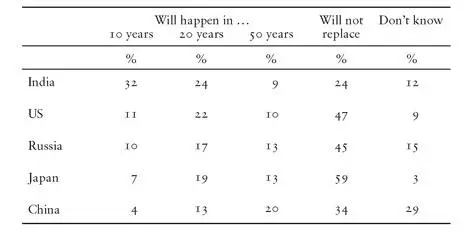
Table 6. Opinions on if and when China will replace the USA as the dominant world power.
There is a well-nigh global consensus that the Chinese economy will one day be as large as that of the United States, if not larger (see Figure 41). Furthermore, as can be seen from Figure 42, this is regarded, on balance, with a surprising degree of equanimity. In a widely cited report published in 2007, Goldman Sachs projected that China’s GDP, in terms of US dollars, will overtake that of the United States in 2027 to become the world’s largest. [1227] [1227] Dominic Wilson and Anna Stupnytska, ‘The N-11: More Than an Acronym’, Goldman Sachs Global Economics Paper , 153 (28 March 2007), p. 8. This followed an earlier paper in 2003 which suggested 2041; Dominic Wilson and Roopa Purushothaman, ‘Dreaming with BRICs: The Path to 2050’, Goldman Sachs Global Economics Paper 99 (2003), p. 10.
These predictions find reflection amongst the Chinese themselves in the extraordinary optimism that they display about the future, greater than that of any other people, Americans included, and which is obviously based on the transformation in their living standards over the past three decades (see Table 7).
As China begins to emerge as a global power, what forms will its growing strength take? Or, to put it another way, what will a globally hegemonic China look like? How will its power be expressed and how will it behave in such a scenario? As we peer into the future, history can in a limited way serve as some kind of guide. Over the last two centuries, there have been two globally dominant powers: Britain between 1850 and 1914, and the United States from 1945 to the present. Given that it is the more contemporary example, the American experience, while in no sense acting as a model, can nonetheless serve as a reference point in seeking to understand what a Pax Sinica might be like, including how it might be different. So what are the characteristics of America ’s global hegemony?
• It has the world’s largest economy.
• It has one of the world’s highest GDPs per head.
• It has the world’s most technologically advanced economy and also the most innovative, as exemplified by Silicon Valley.
• It is by far the world’s strongest military power, which, based on its maritime and air strength, enables it to exercise its influence in every region of the world.
• Its overall global power means that it is a key factor in the calculations and attitudes of more or less every country in the world. All countries, as a consequence, enjoy, in varying degrees, limited sovereignty, from the UK and Israel to Mexico and even China.
• The international economic system was predominantly designed and shaped by the United States and its rules are still determined largely by the US.
• It is home to the best universities in the world and has long attracted some of the most able global talent.
• English has become the global lingua franca largely because of the power and appeal of the United States.
• Hollywood dominates the global film market and, to a rather lesser extent, that of television as well.
• American corporate brand names like Google, Microsoft, Coca-Cola and Wal-Mart tend to predominate over those of other nations. [1228] [1228] ‘Faced with a Steep Learning Curve’, Financial Times special report on global brands, 23 April 2007.
• The United States is not only by far the most important country in the world but New York is also, de facto, the world’s capital. What is American also frequently tends to have a global presence.
• American history has become part of the global furniture, with its most important landmarks, such as the Declaration of Independence, the Civil War and the frontier spirit, familiar to the entire world. Similarly, its customs, from Thanksgiving Day to Halloween, often have a global resonance.
• American values — be it individualism, democracy, human rights, neo-liberalism, neo-conservatism, the market, freedom or the frontier mentality — often enjoy a preponderant global influence.
• American supremacy has been associated with the global dominance of the white race and, by implication, the subordination and subjugation of other races in an informal global hierarchy of race.
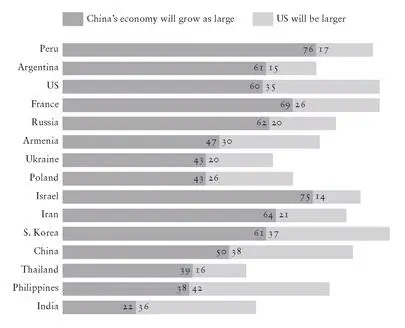
Figure 41. Responses to the question, ‘Do you think that it is more likely that someday China’s economy will grow to be as large as the US economy or that the US economy will always stay larger than China’s?’
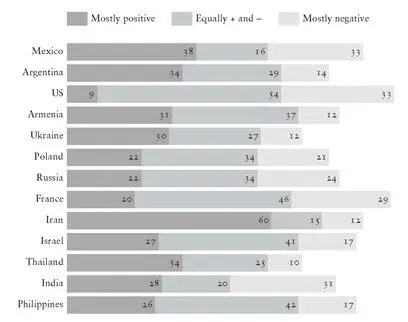
Figure 42. Responses to the question, ‘If China’s economy were to grow to be as large as the US economy, do you think that would be mostly positive, mostly negative, or equally positive and negative?’
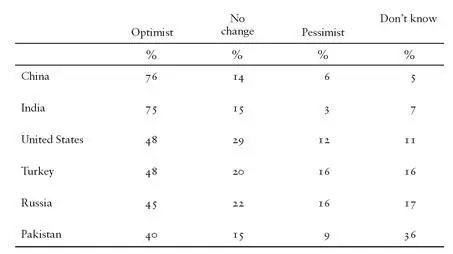
Table 7. Personal optimism (Nov 2005).
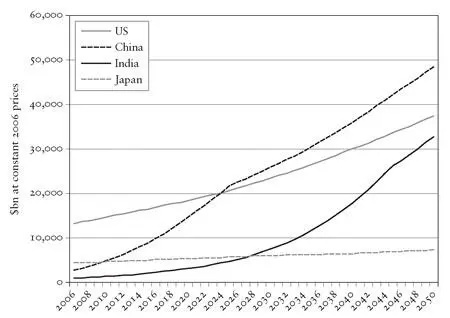
Figure 43. Projected size of major economies, 2006–2050 (GDP at market exchange rates).
Even in the case of the United States, however, whose influence is far greater than that of any other nation in history, this overweening power has never been without constraint. The concept of hegemony elaborated by the Italian Marxist Antonio Gramsci — which should be distinguished from the pejorative Chinese use of the term [1229] [1229] William A. Callahan, Contingent States: Greater China and Transnational Relations (Minneapolis: University of Minnesota, 2004), pp. 158- 9.
— entails the complex interaction of coercion and consent, force and leadership, and, though it was originally advanced to explain the nature of power within societies, it is also relevant to international relations. [1230] [1230] Antonio Gramsci, Selections from the Prison Notebooks (London: Lawrence and Wishart, 1971), pp. 12–13, 206-8, 333, 416-18.
Gramsci’s idea bears some resemblance to the distinction between hard and soft power employed by the American writer Joseph Nye, though Nye’s appoach is less conceptual and more classifica tory in nature. [1231] [1231] Joseph S. Nye Jr, Soft Power: The Means to Success in World Politics (New York: Public Affairs, 2004), Chapter 1.
Far from hegemony being set in concrete, it is constantly contested and redefined, the balance of power never static, always in motion. Nor is it ever absolute. Even though the United States possesses almost as much military firepower as the rest of the world put together, that does not mean that it can do whatever it likes wherever it chooses, as its disastrous occupation of Iraq illustrated. Moreover, as we have observed, while it enjoys military supremacy, its economic preponderance is steadily being eroded. Although the US is the world’s sole politico-military superpower, its influence varies from sphere to sphere and region to region — and in some cases it remains extremely limited. Take the unlikely example of sport. Although the US generally tops the medals tables in the Olympic Games, there are many sports in which it is not dominant and others from which it is virtually absent. The most popular American sports have remained largely confined to the US in their appeal, with the exception of basketball, while the world’s most popular game is football, a European export. Similarly, apart from its domination of a key sector of the fast-food market, American cuisine enjoys little or no global influence.
Читать дальше

















